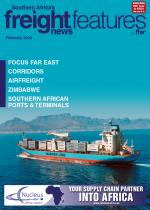Despite ongoing global economic challenges, more and more shipping lines are sourcing additional volumes for South Africa through the different routes they are servicing. This requires port terminal operators, more than ever before, to be on top of their game.“Stack f luidity is, and will remain, our number one priority to support operational efficiencies through the facilitation of cargo f low in and out of the terminals in Durban,” says Peters. “Both Pier 2 and Pier 1 Container Te r m i n a l s will remain as “throughput” terminals. It is imperative that we improve operational efficiencies that we hope to achieve through revised process re-engineering initiatives, equipment readiness, and improved customer and stakeholder collaborations.”He says over the past year TPT has been working hard to achieve its goals, including improving cooperation and communication with its customers as well as strategic supply chain partners and stakeholders.The organisation has also taken the opportunity to benchmark its container terminal practices, with assistance from the World Bank, to assess and provide guidance on how it can improve terminal efficiencies – and this has resulted in the implementation of several initiatives. “The reliability of our equipment is critical,” says Peters. “At present, this is being managed through improved reliability-centred maintenance regimes and refurbishments/upgrades where necessary. We have also undertaken a focused recruitment drive and upskilling of employees to ensure effective operating capacity at the terminals.”There is no denying that TPT faces some big challenges at the Port of Durban. “We are still dealing with the impact of the aftermath of the 2022 f loods on infrastructure. The significant damage to the rail network resulted in the migration of volume from rail to road,” says Peters. “The higher road volumes on Bayhead road are related to the rail to road migration, and precinct traffic increase in mineral commodities has contributed to sporadic road congestion which hampers container supply chains.”One of the biggest challenges remains the access roads to and out of the terminals. “TPT has realised significant benefits from the mandatory container booking system that was implemented in 2020. Also, through the Durban Decongestion Task Team, TPT is cooperating with TNPA and the City of Durban to manage traffic congestion in different precincts where TPT has terminals, including Maydon Wharf, Point, and Bayhead.”Commenting on the waterside challenges, Peters says TPT only managed to clear the backlog from the October strikes in December 2022. “This was four months faster than after the 2010 strike,” he says.Another ongoing challenge has been the lag in port infrastructure investment following the state-capture situation, as has been confirmed in reports by the Ports Regulator. Transnet, as a whole, has also been challenged to manage costs related to the pressures to repay loans, and investment capital remains a scarce financial resource. The availability and reliability of key port equipment are a challenge. Peters says despite the numerous challenges, the importance of the Durban terminals from a regional perspective cannot be underestimated. “Both Pier 1 and 2 will remain as the hub for gateway cargo and the Durban port remains very competitive on strategic commodities, in particular containers and automotive,” he says. “While competition from Namibia and Mozambique is increasing, the reality is that South Africa’s capacity and connectivity remain the highest in sub-Saharan Africa, which complements the east and western region. We remain confident that Durban will remain the gateway to Africa for years to come.”

